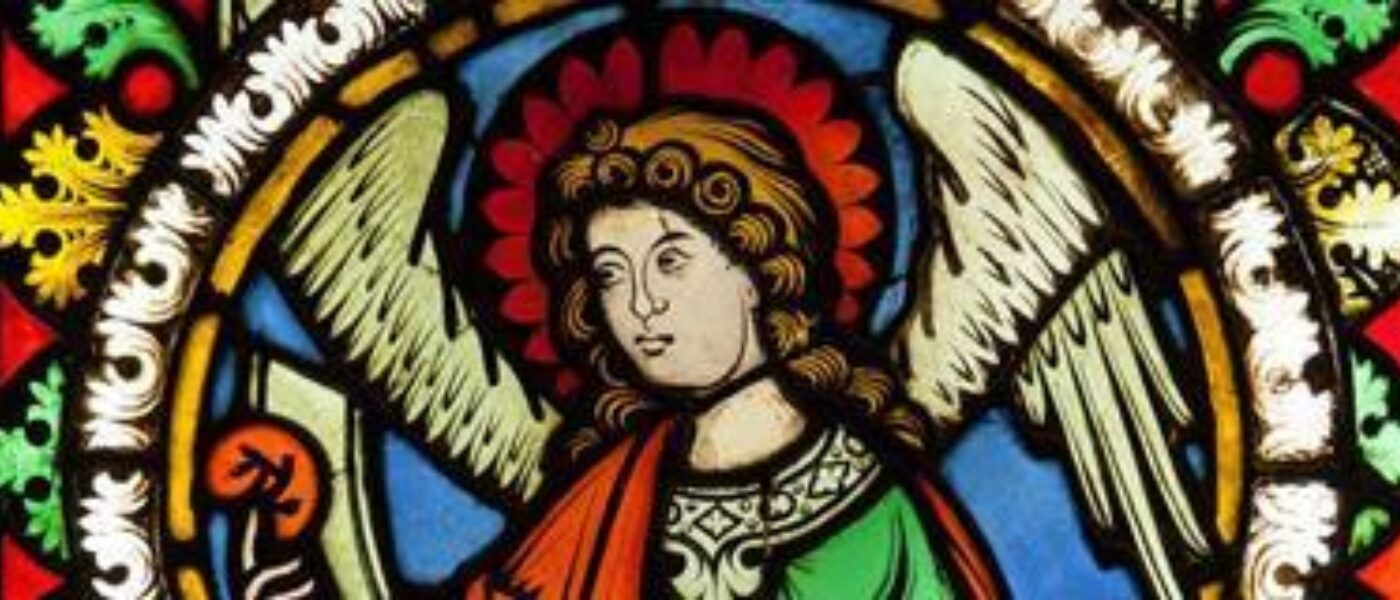FENESTRA

FENESTRA - 800 Years of fenestration history. Flat glass and windows in Federal Scientific Institutes
The FENESTRA project focuses on the flat-glass collection conserved at the Art & History Museum, one of the most comprehensive collections of flat glass in the Low Countries. Fenestra is funded by Belspo.
Flat glass is one of the greatest and most versatile art forms. Across numerous disciplines, stained glass windows in monumental settings have been thoroughly studied over the last two centuries. However, an even greater quantity of material remained unappreciated and unstudied in Belgian storerooms. The Art and History museum of Brussels has unparalleled resources for the study of flat glass in its depots providing a unique collection of material dated from the 13th to 20th century. This collection was the subject of this project. The collection can be divided in several sub-collections based on parameters like for example the flat glass type (individual fragment, roundel, unipartite panel, lead light, stained glass panel or complete windows), production period, production workshop, production technique, material and stylistic properties and specifications regarding acquisition.
Objectives
- The conservation of the collection. To evaluate concrete conservation issues and to act for preventive conservation and long-term storage of the full collection.
- The creation of inventory files. To make a detailed inventory of all material and create open access databases which are accessible by the broad public.
- Study of the collection. This very broad objective formed the umbrella of a subset of research questions that were either linked to the research of the individual pieces of the collection or to the use of the collection as case study to answer state-of-the art research questions. By applying a transdisciplinary evaluation of the collection, the goal was to understand the extent, the state, the formation, and the historical value of the collection as a whole or of some well-selected individual pieces and to contribute to state-of-the-art research questions which are linked to potentially hidden evolutions in glass composition and technology (in the Low Countries).
- Dissemination and outreach. The publication of the research results in a wide range of peer reviewed journals; as well as a Corpus Vitrearum (CVMA) publication. To bridge the gap between interesting academic knowledge and the broad public, an exhibition was organized at the end of the project.
Methodology
- The conservation of the pieces consisted of three main steps which were carried out in a serial order: the installation of the storage room, the investigation of the state of the collection and the conservation of some well selected pieces.
- After the storage room had been installed and the pieces had been moved to this new location, an inventory was made of all pieces. In a next step high resolution pictures were taken by a professional photographer after which all the information was added to the digitalization platforms BALaT (KIK-IRPA) and Carmentis (A&H museum).
- The study of the formation of the collection was based on archival research. The individual pieces were investigated applying a combined art historical, archaeological and applied scientific methodology. The main aspects considered during the art historical research are technique and materials, iconography, style, and the relationship with contemporary artistic production. The archaeological research focused on the macroscopic study of the pieces with the goal to identify clues on the production traces. To study the raw materials and the silver stain layers of the windows, two non-destructive spectroscopic methods were employed, i.e., UV-VIS-NIR absorption spectroscopy and portable X-ray Fluorescence spectroscopy (p-XRF). The analysis was performed in view of the three defined sub-objectives: (i) to improve the methodology of dating flat glass based on optical fingerprints; (ii) to investigate the relation between composition (glass purity), fabrication technology and optical transparency; (iii) to research the technology of silver-stained glasses by optical means.
- Each project partner had the responsibility over one main activity (VUB – journal publications; A&H – exhibition; KIK-IRPA – Corpus Vitrearum volume) supplemented with several smaller activities.
Conclusions and recommendations
- The complete collection has been brought together in a new storage room obeying the optimal temperature and humidity conditions.
- Files have been created that describe the state of an individual piece, the preservation actions that have been taken and if applicable advises for future conservation.
- A first cleaning step has been applied to all pieces. For twenty pieces an urgent restoration treatment was carried out. Fourteen panels were restored.
- The inventory list was completed and for each panel a high-resolution picture was taken. This information was added to BALaT and Carmentis.
- The historic research gave us important insights into the life history of the collection.
- One of the main conclusions of the transdisciplinary research is the remarkable character of the stained-glass collection, by its importance, the diversity of the pieces and the artists represented through them, with some pieces that can be considered as leading works.
- The transdisciplinary research allowed us to have a better view on the authenticity of those pieces for which the dating was questioned and provided us information on the used materials and techniques.
- During the art-historic research the iconography of the windows in the collection have been further studied and updated.
- The art-historical research findings include multiple examples of leading artists that applied their art to stained glasses.
- With the outcome of the macroscopic research, we were able to classify the roundels in groups based on the number of fabrication traces that were observable by the naked eye. Further research unveiled no direct relation between the number of air bubbles and the quality of the painting layers. However, an inverse relationship is observed between the purity of the raw materials and the number of appearing air bubble inclusions.
- During this project, we demonstrated the feasibility of applying UV-VIS-NIR absorption spectroscopy as a non-destructive method to better discern the subgroups of HLLA glass and their respective dating.
- A generic method was worked out to quantify the iron and the cobalt concentrations from the recorded optical spectra. This approach has been described in a submitted journal article (‘Using UV-Vis-NIR absorption spectroscopy as a tool for the detection of iron and cobalt in glass: a case-study on HLLA material from the Low Countries’) so that other researcher can apply this method to study glasses of other collections.
- The project findings helped us to better understand the glass consumption in the Low Countries. In most cases, the glass analytical research confirmed the expected HLLA composition. We concluded that in a minority of cases, the glasses are potash glass.
- The project permitted the investigation of the interplay between glass technology (glass ‘quality’) and daylight transmission. A comparison was made between non-figurative windows and a selection of six roundels. For both groups we observed an evolution towards less pure materials in later periods. It was observed that more light was transmitted through the roundels compared with the non-figurative windows due to their lesser thickness. This can be seen as proof for their status as a luxury commodity. These findings are published in a Scientific Reports paper (‘The interaction between daylight and 15th and 16th century glass windows from the Low Countries’).
- By studying the spectral profiles of two sets of silver-stained samples with known fabrication conditions, we were able to define a flowchart that could help in unravelling the applied silver stain technology of unknown samples (applied silver salt, temperature, type of mixing agent).
- The project helped us to gain insights on the applied silver stain technology in the Low Countries.
Keywords
Glass – Stained windows – Roundels – Window glass – Plain glass – Unipartite panes - Glass conservation – Iconographic research – Stylistic research – Archaeometry – UV-VIS-NIR absorption spectroscopy – Portable XRF – Glass consumption – Glass composition – High-Lime-Low-Alkali – Potash glass – Silver stain technology – Daylight transmission – Low Countries – History of the A&H collection Brussels




